- Administrator
- Albums and Singles
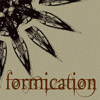
Inhabiting a murky, future-primitive electronic world akin to some of Coil's best work, Formication blends opaque ambient passages with mutated, unnatural rhythms that carefully straddle the line between formless chaos and repetitive, occasionally almost danceable beats.
It's on tracks like "Solus Air & the Dream of the Heart Star" where the two structural opposites blend together perfectly, with amorphous ambient passages interspersed with erratic, but catchy distorted beats.The chanting voices and disorienting electronics convey a ritualistic feeling throughout.
"Slow Man – Personal Insults" falls more into the world of chaos, with disembodied voices and sputtering rhythmic elements careening together in a dense, heavy mix that has a sense of tension that’s almost tangible.The effect is even more pronounced in its sequencing next to "The Girls Spun Round in Fear," which is far more sparse and arid, even if it does have the sensibilities of an updated Blade Runner soundtrack. While it's not light in the conventional sense, it at least allots some breathing room.
I was most entranced by the pieces that fell more into the world of conventional electronics.The solid, pummeling techno beats of "Silver" are part of a track that is structurally pretty simple, but with an array of sounds that make it more captivating than it would seem on the surface.In a similar way, the fractured take on the Chain Reaction type sound that closes the album on "Absolute Will" makes for a great ending:it might not do anything out of the ordinary, but what it does, it does quite well.
While there are a couple tracks, like "I Had a Plastic Head that Melted" and "Dr. Umens May Care," that aren't all that memorable, the bulk of this album is a fresh take on electronic music that varies between dark drone worlds and dance floor oriented beats, two genres that are rarely paired together.
Early copies are packed with an additional CD-R remix EP that features Hoor-paar-Kraat stretching "Argentum" out into creepy space, Locrian making "This is Normal for Me" even more bleak than the version that opens the main album, and Formication themselves contributing "I Dare You," a beat oriented track that is great on its own, but would have been out of place on the main album.It's worth the few extra bucks for the remixes, that’s for sure.
samples:
- Solus Air & the Dream of the Heart Star
- Nightly Instructions from the Cracked Telephone
- The Girls Spun Round in Fear
 
Read More
- Administrator
- Albums and Singles

While many, myself included, tend to think of New York’s Controlled Bleeding based on their harsh noise period in the mid 1980s, they always had a more multifaceted sound, and more recent works, such as Odes to Bubbler, have embraced more of a free jazz influenced rock sound. Paul Lemos and company do that genre quite well on here, though many CB fans may already own the bulk of this record.
Other than the first six tracks on here (and two uncredited bonus songs), this material was on the Vinyl-on-Demand Songs From a Sewer of Dreams LP box set, and also the first disc of the Gibbering Canker-Opera Slaves CD set.If you're an owner of either of those, such as myself, think of this as an expensive EP.
"Chum Grubber" and "Controlled Bleeding" reminded me of some of Naked City's best material, in that it puts just the right amount of ramshackle noise into a traditional rock framework, both tracks reaching out into harsh, noisy waters but being reigned back in at just the right time.On "Eye of Needle" and "Shards Blown Back," the band embrace more of a post-rock sensibility, relying less on instrumental freakouts and more on textural explorations, making for two very captivating songs.
The remaining material, which is previously released, takes its cues from the band’s long and varied discography.There's more of the jazz influenced noise freakouts, such as the four part "Bees," which nicely juxtaposes noise, jazz, and grindcore throughout, and "Spattered In the Key of "O"," featuring Weasel Walter on drums, treads similar waters, adding in some squawking horns to the machine gun rhythm fest.
"A Love Song (In Two Parts)" shows a bit of the band's playful side:for the first third it's a prog rock synth kaleidoscope of sound, but launches violently into a wall of harsh digital noise that harkens back to their earlier days, before closing out on a somewhat random (and goofy) piano and guitar ending."An Announcement," which is slightly different on here than the other places it appears, is a cute little track of the band if it was lead by a little girl.
The first of the two unlisted tracks grabbed me, with its slow building structure and dubby, Krautrock inspired rhythms that are equal parts Tago Mago and Metal Box, a combination that can’t go wrong in my opinion.It sounds as if it might have been recorded specifically for this disc, but I can't say for sure.
Other than the redundancy of this material when compared to the aforementioned box sets, Odes to Bubbler is a strong, if not completely coherent, album.While it jumps back and forth stylistically, pretty much everything Lemos and cohorts choose do, they do well.There are bits that do nothing for me (the jazzy scat vocals that pop up aren't my thing), but the whole package works well.Those who pine for the days of pure harsh noise will probably not be overly interested, but for me, it’s the right level of eccentric.
samples:
 
Read More
- Administrator
- Albums and Singles
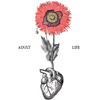 While his name may be most closely associated with the No Fun Fest he curates and the abrasive noise that is usually featured there, Giffoni’s own work tends to focus less on the harsh and more on the minimal electronics. On this album, he continues his focus on rudimentary analog electronics in a highly structured set of works that is arguably TOO structured.
While his name may be most closely associated with the No Fun Fest he curates and the abrasive noise that is usually featured there, Giffoni’s own work tends to focus less on the harsh and more on the minimal electronics. On this album, he continues his focus on rudimentary analog electronics in a highly structured set of works that is arguably TOO structured.
The five pieces that make up this album all range around nine minutes, with the final, longer track clocking in at a bit over 12. Considering the ridgid structure each track is built on, the individual tracks tend to follow similar blueprints that unfortunately don’t vary too much from piece to piece. Opening track "The Endless Mirror" starts with a rattling set of synth notes that eventually lock into some sense of rhythm as lower pitched notes kick in. As the layers begin to pile on, the early rhythm almost becomes a traditional 4/4 kick drum as rougher square wave frequencies pierce through the mix. In essence, it feels like the soundtrack to a primitive Atari video game.
"A Son With No Father" similarly starts out with an odd electronic warbling chime that repeats, building a sense of rhythm as radio static enters the mix, giving the track an extremely textural feel. Even once the slicing white noise elements come in, it remains a restrained and cautious piece as opposed to an overly chaotic one. "This Is How You Pull The Trigger" opens with a pulsating old school analog synth that could have been lifted from any techno track, but the synthetic spaceship sounds and highly controlled noise parts keep it more in the abstract realm of sound, especially as it eventually transitions into harsher noise work.
"Comfort and Pleasure," however, shows the shortcomings of the disc. The repeated engine revving synths and phased noises call to mind the early days of power electronics, which is only increased by the rumbling bass sequences. While it is an interesting listen, it also feels about five minutes too long. All of the tracks follow this similar pattern of a stripped down introduction that slowly builds and builds in complexity before breaking back down to the introductory sounds.
The plus of this is that the mixing allows one to pay closer attention to the electronic textures that make up the songs that stay fundamentally raw: there’s not a great deal of effects or other processing going on here. The problem is that structurally the tracks all feel too similar and that leads them to being a bit too predictable. While I’m not saying it has to break into pure noise and end up in total chaos, it just feels too formulaic. Overall it’s a good album, but just a bit bland compared to what it could have been.
samples:
Read More
- Administrator
- Albums and Singles
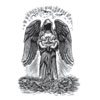 Returning with their second full length, the East Coast Portland (Maine) foursome manage to not only defend their reputation as capable purveyors of riffs most heavy but also to expand their sonic palette in an unexpected but welcome way. With greater control of dynamics, a female guest vocalist and songs played across time scales better expressed in geologic terms rather than minutes, this is one of the best metal albums of the year.
Returning with their second full length, the East Coast Portland (Maine) foursome manage to not only defend their reputation as capable purveyors of riffs most heavy but also to expand their sonic palette in an unexpected but welcome way. With greater control of dynamics, a female guest vocalist and songs played across time scales better expressed in geologic terms rather than minutes, this is one of the best metal albums of the year.
With a crashing thud, Ocean start where they left off on their debut: doom played at a snail’s pace. While it is no great departure for them, it is still an awesome sound that sucks the listener in from the moment it starts. However, another album in the exact same style would be tedious considering the wealth of bands exploring similar musical areas (Moss, Trees, Wreck of the Hesperus, and so on and so on). Ocean avoid stagnation by actively breaking up their already tried and tested sound. Halfway through “The Beacon,” the volume drops out and the sound shifts significantly. Rolling back on the distortion and introducing a female vocalist (Yoshiko Ohara from Bloody Panda), the change in mood is remarkable. Over the second half of this immense song, the power builds up again before burning out exquisitely.
“The Beacon” could have been an album on its own but Ocean have spoilt us by adding another shorter piece to flesh out the album (although at 23 minutes it is still a bruiser!). “Of the Lesser” again returns to the over- amplified plod of Ocean of yore. At first disappointing after the majesty of “The Beacon” but as the piece progressed, an almost ecstatic feeling Godspeed-like momentum builds up before slowing right down again; it is dizzying stuff.
With each subsequent listen of the album I get more and more enthused about the whole thing. Ocean could have very easily just repeated Here Where Nothing Grows but they have pushed themselves further than that. It will be interesting to see where they will go from here, personally further exploration of the quieter sound they have employed here on “The Beacon” would be intriguing. It is here that Ocean have gone from a group that I have liked and would listen to occasionally to a group that I feel have real potential to break apart from their peers.
As a closing remark I would wager that as nice as the 2xLP version is likely to be (Important did a wonderful job on the first album), with the length of the two songs the CD version is probably going to give the best listening experience.
samples:
Read More
- Administrator
- Albums and Singles
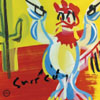 There are just about enough thrills on this debut EP to ward off the nagging boredom of another guitar group traversing a well worn musical terrain. In this case: that which might be termed "surf-gaze."
There are just about enough thrills on this debut EP to ward off the nagging boredom of another guitar group traversing a well worn musical terrain. In this case: that which might be termed "surf-gaze."
Surf City kicks off in very promising fashion with "Headin’ Inside" which has a near-perfect ratio of propulsion, yelling, frantic rhythm, gliding melody and scratchy discord. The running time of 2:27 would also have been super jukebox friendly back in the days when, well, you know. "Records of a Flagpole Skater" has plenty of guitar fuzz, thumping energy, and a vocal afterglow suggestive of sounds launched in Paisley by the Reid brothers.
By contrast "Dickshaker’s Union" seems rather desperate and lifeless (no pun intended) and "Canned Food" sounds like half a song, as ordinary and uninspiring as the title suggests. The EP does well to recover from this lumpen phase and sure enough a livelier spirit returns. Surf City's charm lies in going for the throat while not pretending to be a radical departure. For example, during "Headin’ Inside" the unpretentious cries of "1-2-3-4" have a joyous abandon with no discernable irony or sense of embarrassment. Similarly, on “Mt Kill” the line “Shake, rattle, and roll your hands” sounds just fine whether or not it’s sung with tongue in cheek. One of the better pieces here “Mt Kill” begins with a guitar figure that might have been cribbed from The Church before mutating into a dynamic guitar tone and sense of rushing vocals often associated with prime Sonic Youth. There’s no let down on final song “Free The City,” either, with obvious echoes of The Cure.
Surf City orginated in New Zealand but I think I'll resist the urge to lazily mention any NZ bands. Better to contend that, on the one hand the four best tracks on the EP are just about perfect. On the other hand, the narrow focus runs the risk of what I like to call Giovanni di Varrazzano Syndrome. Adam Nicolson, in his book On Foot, describes di Varrazzona as an Italian navigator who in the 1520s found the sliver of barrier island which includes Hatteras, North Carolina. Just as may still be the case, mainland USA was beneath the horizon, not visible from Hatteras. According to Nicolson, di Varrazzano assumed he had found all there was to America.
samples
Read More
- Administrator
- Albums and Singles
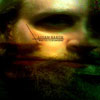 Between his Nadja albums and his solo material, Aidan Baker releases enough music to frustrate all but the most ardent and obsessive collectors. Important Records have just released a two-CD compilation that won't solve that problem, but it features some of the best Baker material I've yet heard.
Between his Nadja albums and his solo material, Aidan Baker releases enough music to frustrate all but the most ardent and obsessive collectors. Important Records have just released a two-CD compilation that won't solve that problem, but it features some of the best Baker material I've yet heard.
Important
With so much music released in the last eight years, it's not hard to imagine Baker having a diverse amount of rare songs in need of greater exposure. I Wish Too, To Be Absorbed collects MP3 downloads and songs from CD-R albums that I know about only because reliable discographies of Baker's work exist online. Despite the multiplicity of styles and approaches Baker utilizes, both discs flow with a logical and pleasing continuity that suggests a proper album more than a compilation. The track selection and running order have little other rhyme or reason; both discs jump backwards and forwards in time, skipping multiple years in favor of shared aesthetics and natural progressions.
Disc one begins with Baker's first release, Element. "Element #1" serves to establish a mood and does little more than rumble and hiss in a threatening, slightly brooding manner. The tolling of deep, distant bells provides a ritualistic tone that resonates throughout much of the collection. "K" follows this mass of sound and lightens the mood considerably, exhibiting Baker's less intense tendencies. Cello and violin are featured heavily during the first half of the song and it's difficult not to imagine Baker taking some inspiration from bands like Godspeed You Black Emperor!, Labradford, or even Rachel's. In a span of five minutes, the song's theme changes from one of memory and yearning to one of suffering and uncertainty. The strings on "K" disappear and the song resolves into a mess of scraping metal and unidentifiable clatter before ending and moving naturally into "Merge." These are the only two songs on the compilation that were originally featured on the same record, Wound Culture. This release was a book/CDr combo that dealt ostensibly with erotic themes in various forms; if "Element #1" set the tone for this disc, then these two songs add just a hint of sensuality to the record. Each of the following songs, whether they be ten or 20 minutes in length, bare traces of these first three compositions. There are hints of industrial influences on some songs and on others it's hard not to hear Baker incorporating shoegaze and krautrock stylings into his work. Whatever dress the music is wearing, it's always harboring a kind of sensuousness that isn't immediately discernible in all of Baker's music, especially not in Nadja. "Speed of Thought" ends disc one with a kind of jam-piece that sounds partly improvised, but also highly structured. It's perhaps the best song on the entire compilation and it represents a side of Baker's talent with which I am entirely unfamiliar. His pseudo-ambient, pseudo-metal, pseudo-drone projects receive plenty of attention, but this post-rock amalgam of a song has me completely spellbound. Hopefully Baker hasn't abandoned this approach and will be releasing more music like it.
Disc two collects the kind of music that I think must be most associated with Baker's solo output. Each of the five songs are long, abstract pieces with highly cinematic qualities. The focus on disc two is long, rolling sounds, muddy bubbles of synthesizer noise, and slowly developing melody. Both "Melusine" and "Esken (Bonedweller)" are mostly quiet pieces that thrive on minutiae and the mysterious qualities of hazy samples. Though definitely reliant on guitar, both songs are rich with tiny details that I can't imagine an electric guitar producing: there are sputtering motor-boats slowly sinking off foggy shores, foot steps tapping down long, ageless corridors, and gelatinous washes of bass-heavy noise creeping in and out of these songs to great effect. The title track is perhaps the most bizarre of all the songs and features a number of samples and tape loops oddly familiar to my ears. I'm nearly certain that a fraction of Autechre's "VI Scose Poise" (from Confield) is utilized on "I Wish Too, To Be Absorbed." The beginning of the song is laden with cut up, completely disproportionate samples that skip, jump, and skew the ocean of underlying guitars and synthesizers that populate the majority of the track. Bird calls, percussive glass, and mumbled vocals emerge towards the end of the song, but this array of sampling is far less manic than the rhythmic jumble that got the whole thing going. The rest of disc two is a quiet, almost-ambient affair that follows the lead of "Melusine" and "Esken (Bonedweller)."
In a way, I Wish Too... serves two functions: it highlights a number of Baker's musical styles and it functions as two complete and independent records. Both discs have natural peaks and valleys and both discs present a variety of Baker's musical approaches. Though I doubt that this release was meant to serve as an introduction to Baker's solo output, it fills that role perfectly and with a lot of class. I've heard plenty of good compilations and retrospectives before, but I Wish Too... goes above and beyond because it manages not to sound like a collection or retrospective at all.
samples:
Read More
- Administrator
- Albums and Singles
 Herbst9 bring into focus the trances and dream-quests of shamans and the primeval connection we all have to the primitive past. Drawing on the vast reservoir of the collective memory of the human species, Herbst9’s Henry Emisch and Frank Merten produce monumental music that simultaneously delves into deep time and memory, as well as the physically unfathomable depths of the subterranean.
Herbst9 bring into focus the trances and dream-quests of shamans and the primeval connection we all have to the primitive past. Drawing on the vast reservoir of the collective memory of the human species, Herbst9’s Henry Emisch and Frank Merten produce monumental music that simultaneously delves into deep time and memory, as well as the physically unfathomable depths of the subterranean.
This is no superficial attempt at ethno-ambient puerility, however, merely lashing voice samples of ‘primitives’ to anemic electronic washes or trip-hoppy tribal rhythms. Herbst9 haven’t gone for the easy option of tying together stereotypical elements in an attempt to create some dubiously portentous vision of the past. In some respects it feels as if they have discerned the secret of temporal elasticity, bent time to their will, and rendered the intervening period between then and now obsolete. Even so, they are only able to give us glimpses and fleeting flavors, partial sketches, distilling observations into representative and digestible bite-size chunks. Snatches of almost incomprehensible voices, with only the occasional word being understood, surface and fleetingly rise above seas of deep oceanic drone, before being sent once more into the depths. These are the voices of all our ancestors, familiar and knowable but simultaneously and forever beyond our understanding, alien even. It would be quite easy to let these voices become overwhelming, to form a warm fuzzy blanket, reassuringly comforting. Yet, there is a lot about these recordings that is distinctly unsettling and not quite as benign as intimated.
The chronological distance is one warning perhaps—that however much one would like to think we can somehow connect with those voices, the world it describes is out of reach and not the one of today. The samples used are indeed culled from the present, lulling one into a misleading belief that they are the bridge between the years. Couple those voices with the darkly-flavored and edgy swirls and drones constituting the medium upon which they float and have their being and alarm bells should start ringing. These background drones are meant to upset and disturb the equilibrium, even if only subliminally, their purpose is to serve as a reminder that these waters contain hidden dangers. The ‘ancestral voices’ are just one among many inhabitants of this temporal ocean, and not all of them are friendly and welcoming.
Dark ambient, when successfully crafted, is the conjuror of both sublime visions and dark unformed terrors. Herbst9 dig deeply and artfully ino the genre, coming up with resonances and music that burrows into the soul. The title track is entirely typical: softly shuddering washes and cavernous distant thunder roll ominously overhead with gentle whispers echoing in harmony. Gradually, the tone deepens, becoming darker, and it ushers in an uneasiness and a discernible coldness. This state is compounded and heightened by the introduction of a shuffling tribal percussive gait, portending a slow and unhurried doom. In contrast, the opening track “The Lament Begins” hints at deep loss and an even deeper grief, one that spans the years and continues to entrench itself ever deeper the more distance it puts between past and present.
It’s those tensions created by the chiaroscurotic dynamics that make this album successful. In other words, the interplay between the beguiling siren voices and the dark, dense, liquid medium from which they emerge make this album as good as it is. The tension reveals itself with subtlety, resulting in a subliminally-felt frisson rather than physical sparks. An indescribable dread descends, its source remaining undiscovered. Despite my generally positive outlook on it, it has to be noted that this album can't escape all negative criticism. My one disappointment, mild though it is, revolves around the fact that I felt there was a sense of uniformity; this album sometimes defines itself too narrowly and so its execution suffers.
Even with this reservation, I consider The Gods are Small Birds, but I am the Falcon to be a fine album, Emich and Merten exert a good measure of craft upon the dark ambient genre. Dark ambient is all about the evocation of mood and atmosphere, and by any of the criteria normally used to judge such genre efforts, I deem this to be a great deal more than adequate.
samples:
Read More
- Administrator
- Albums and Singles
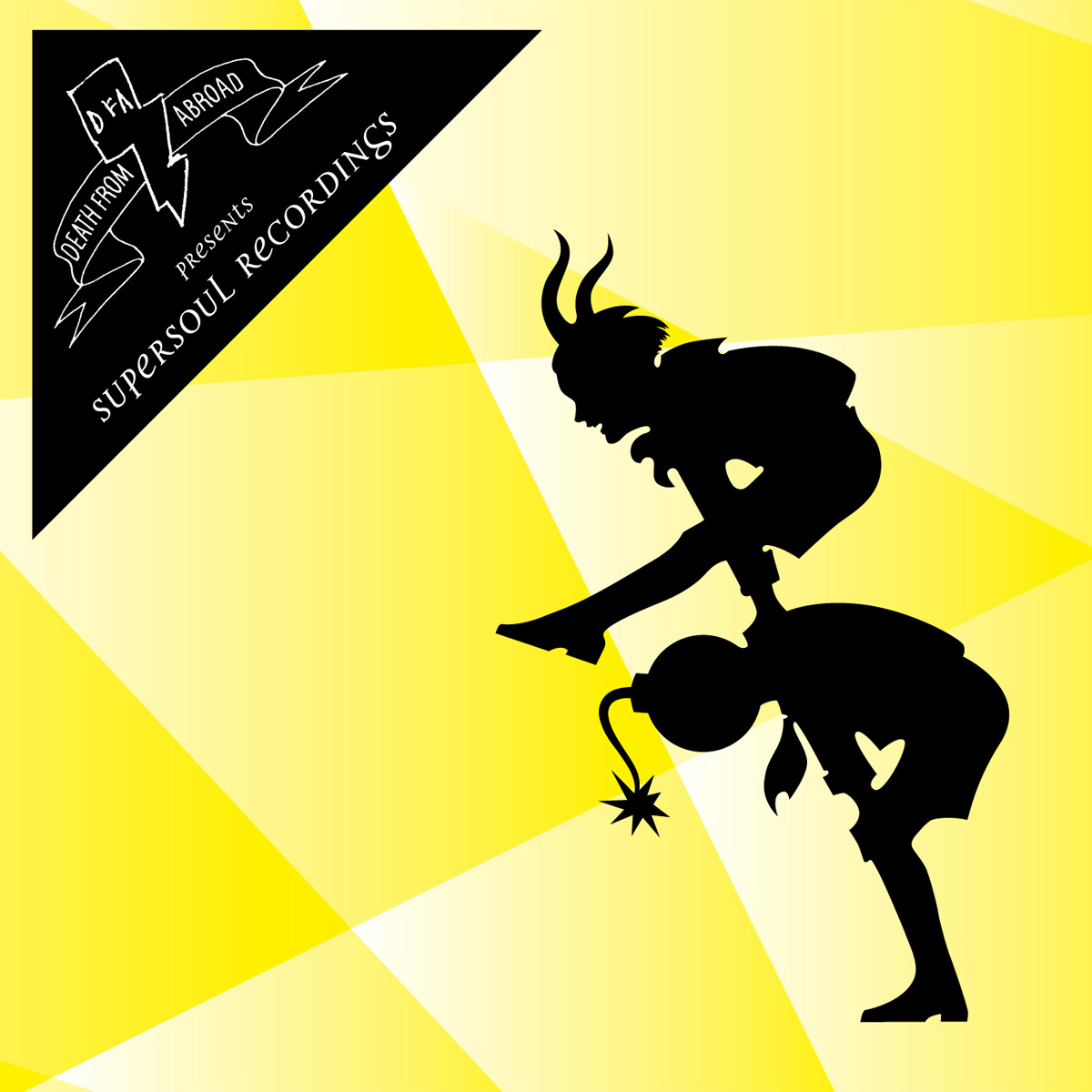 Our increasingly irregular feature looking at crucial new dance music returns this week with reviews of a two-disc DFA/Supersoul Recordings comp, a new collection of Balearic disco, an edits disc by Betty Botox, a mix CD by Optimo and the debut album by Yo Majesty.
Our increasingly irregular feature looking at crucial new dance music returns this week with reviews of a two-disc DFA/Supersoul Recordings comp, a new collection of Balearic disco, an edits disc by Betty Botox, a mix CD by Optimo and the debut album by Yo Majesty.
"Death From Abroad Presents Supersoul Recordings: Nobody Knows Anything"
DFA
DFA's European sister label Death From Abroad gives us a double-disc compilation of singles and b-sides, collecting pretty much everything released via vinyl and digital by Berlin's Supersoul Recordings. Supersoul is a relative newcomer in the dance music scene, putting out its first single in 2006. Founder Xaver Naudascher, who also records for the label, was previously best known for collaborations with Einstürzende Neubauten, remixes for Pylon and UNKLE, and production work on the Run Lola Run soundtrack. I will try not to hold that last credit against him. The label's unifying aesthetic is a focus on lateral-minded, genre-defying approaches to classic subgenres of dance music. A bit of fun can be had spotting the influence from track to track: "Oh, there's a Detroit electro piece," "This one sounds like Italo Disco," etc. However, these genre exercises are far from reverential or narrow in scope. The opener "Lost," credited to Naudascher, mixes messy, hand-played granular synth sounds into the rigid framework of Detroit 909/303 electro. The epic four-part "Moon Unit" by Mogg & Naudascher is krautrock-influenced Italo Disco, combining sparkling arpeggiations with spacious, longform kosmische meanderings. It's awesome stuff, easily matching the bar previously set by Delia & Gavin's The Days of Mars. Walter Jones aims for the ultracompressed disco-house aesthetic made famous by contemporary French producers, but ends up in territory that is no less sleek, crystalline and ultramodern than Naudascher's contributions. Other standouts include Plastique de Reve's two sides, both which find new and interesting ways to breath life into the corpse of Hi-NRG house music, whether with the sassy singalong refrain of the Radical Cheerleaders on "Resist," or the dramatic use of resonance, cutoff, stereo panning and EQ in "Lost in the City." There are a few clunkers across these two discs, but surprisingly few, as Naudascher clearly has a strong editorial voice, and almost everything he has released fits into his vision, bringing dance music's past kicking and screaming into an everpresent now.
sample:
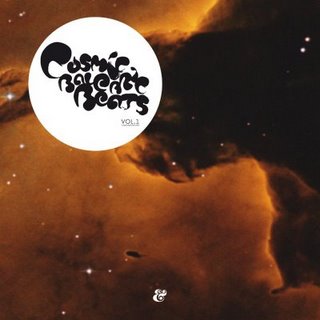
"Cosmic Balearic Beats Vol. 1"
Eskimo
sample:

Betty Botox, "Mmm, Betty!"
Endless Flight
sample:
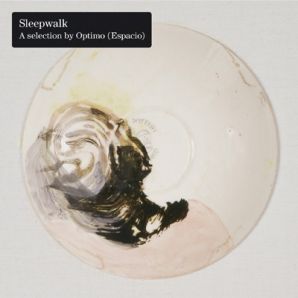
Optimo, "Sleepwalk"
Domino
sample:
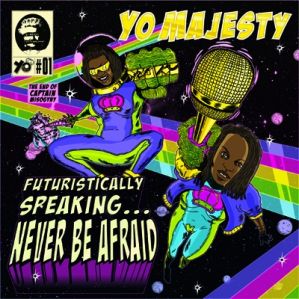
Yo Majesty, "Futuristically Speaking...Never Be Afraid
Domino
sample:
Read More
- Administrator
- Albums and Singles
 Despite the reference in the title to the collector of souls, this collaboration between ambient trio Rameses III and Brad Rose of Digitalis, a.k.a. The North Sea, eschews the obvious direction of doom and menace. Instead, they journey into frequently blissful territory, with an emphasis on emotional textures that invite introspection and rejuvenation.
Despite the reference in the title to the collector of souls, this collaboration between ambient trio Rameses III and Brad Rose of Digitalis, a.k.a. The North Sea, eschews the obvious direction of doom and menace. Instead, they journey into frequently blissful territory, with an emphasis on emotional textures that invite introspection and rejuvenation.
The album consists of two 18-minute tracks supplemented by a remix from Xela. Quiet drones and subtle strings with occasional plucked notes form the main compositional elements of “Death of the Ankou.” While a mournful strain runs through it on occasion, the track doesn’t come across as sad or depressing so much as accepting of things as they are. The effect is surprisingly soothing, if not comforting. Delicate chimes and a distant reed instrument provide the wistful ending, like the last gasp of stars fading in the sunrise. “Night Blossoms Written in Sanskrit” begins with a deeper drone, while higher pitches fly overhead. A strummed guitar surfaces momentarily before it’s absorbed back into nothingness. Some reverberating strums pop up again as the ending escalates toward a sunnier ending. Although the first one isn’t a downer by any means, this track builds from that one into something that’s more joyful and optimistic.
Xela’s remix, “Return of the Ankou,” combines elements of the two main tracks into one which becomes more active and less subtle. The strums are more in the forefront here, as are rattles, chimes, and slight doses of feedback. It’s a nice contrast to the two that precede it, yet linked enough thematically that it returns the album to the beginning in a cycle of death and rebirth.
The experience is both peaceful and invigorating, inviting frequent returns.
samples:
Read More
- Administrator
- Albums and Singles
 Ridiculously slobbered over by elite geeks as well as the far more fashionable new disco vanguard, the progressive music of Black Devil was allegedly rediscovered after years of obscurity, culminating in a handful of overblown, overlapping releases from Rephlex. Irrespective of the convuluted backstory's validity, original member Bernard Fevre's return after roughly three decades manifests itself as this nebulous collection of undated, unglamorous tunes.
Ridiculously slobbered over by elite geeks as well as the far more fashionable new disco vanguard, the progressive music of Black Devil was allegedly rediscovered after years of obscurity, culminating in a handful of overblown, overlapping releases from Rephlex. Irrespective of the convuluted backstory's validity, original member Bernard Fevre's return after roughly three decades manifests itself as this nebulous collection of undated, unglamorous tunes.
Since Fevre has opted not to reveal just how old or new these six tracks are, I'm therefore compelled to eliminate all the evidently contrived hype from the equation. With context stripped away, what remains simply fails to dazzle beyond a few melodic glints hardly worth revisiting. Opener "The Devil In Us" shuffles through synthesizer soundbanks with untreated attention deficit disorder, while "On Just Foot" figuratively and half-literally farts along with a giddy proto-rave tinkling electro bell line. "I Regret The Flower Power" begins like some funky remix of Throbbing Gristle's "Hamburger Lady" before a bubbly bassline and sharp string patches jump into the forefront, though Fevre's vocals disappoint. Throughout the songs, Fevre's muddy muttering, indistinct trill, and wordless bleats sometimes make for surprisingly decent hooks, though typically lack presence, epitomized by the Moroder-esque "Coach Me" and "An Other Skin."
Other than those who still consider Richard James a tastemaker or delight in anything even remotely Metro Area-ish, I doubt that 28 After, released by a label that hasn't even updated its website to announce this release, can do much more for Black Devil's profile than neatly wrap up its 15 minutes of underground fame.
samples:
Read More
- Administrator
- Albums and Singles
 Christopher Leary combines beats with orchestral elements in this mostly airy and pleasant album. The songs are all solidly constructed and easy on the ears, but frequently lack distinction. Leary expresses a limited emotional palette on these compositions, and as a result the album is short on personality.
Christopher Leary combines beats with orchestral elements in this mostly airy and pleasant album. The songs are all solidly constructed and easy on the ears, but frequently lack distinction. Leary expresses a limited emotional palette on these compositions, and as a result the album is short on personality.
The first few songs are so similar that they’re nearly indistinguishable from each other, and none lingers in the mind after they’re over. Leary changes things a little bit with "Infotain Me," giving it a longer introduction before bringing back the beats. This one doesn’t quite go anywhere different from the others, but it’s a sign of change that continues as the album progresses. "Anomie" adds a slight distortion as a textural component, and the tempo picks up a little bit compared to those that precede it, but it still doesn’t necessarily do anything different.
"Open Top" has some metallic echoes in addition to its standard instrumentation. "Lifewish" is mostly ambient with slight melodies and no beats at all, like "Oneirist," which follows it. "Bluebottles" and the closer "Vegas" are both decent tracks, yet don’t have a whole lot going on that isn’t heard elsewhere on the album.
Since almost every song is ultimately driven by beats rather than melody, the orchestral elements often feel decorative rather than essential. They are frequently beautiful, but don’t evoke anything further. It’s certainly not a bad album, but it’s not terribly exciting or different, either.
samples:
 
Read More

